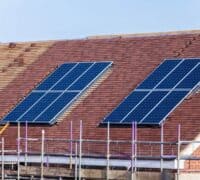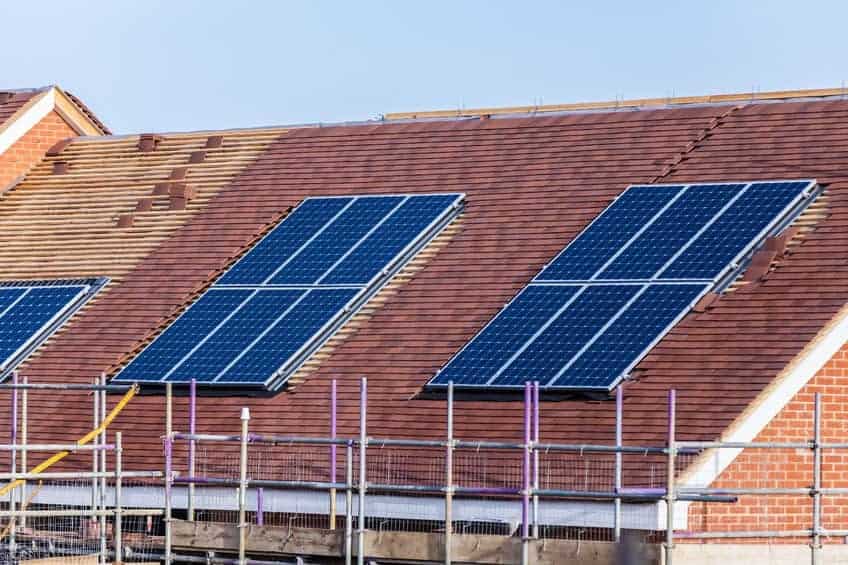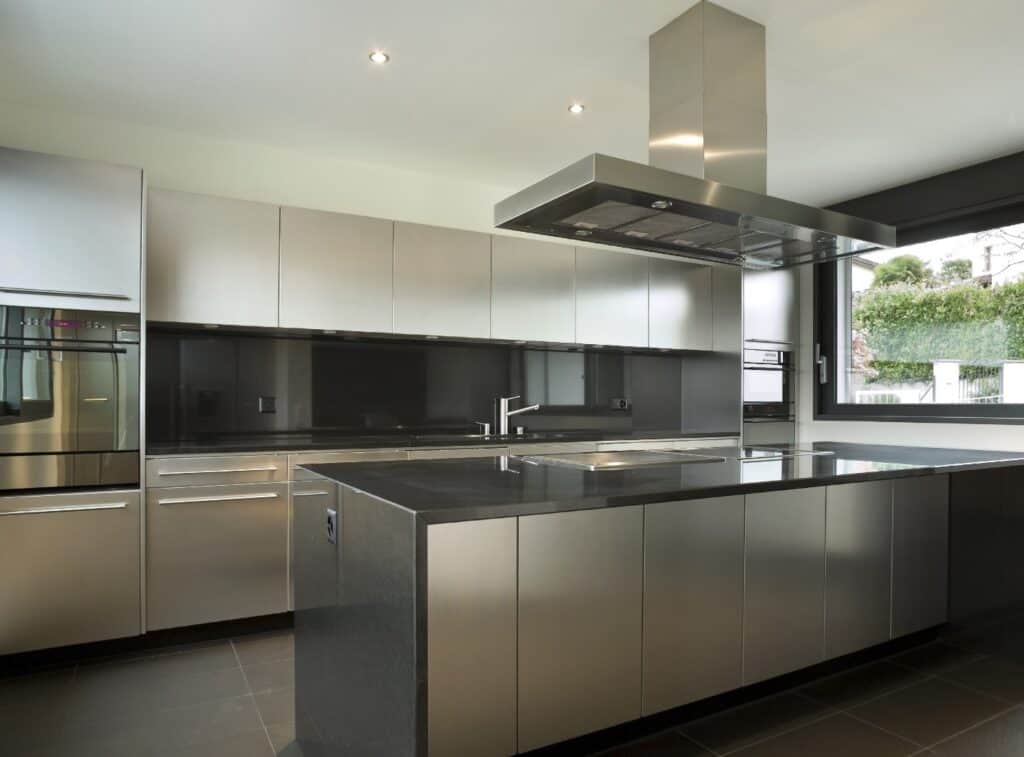
Energy efficiency is no longer a luxury in Houston home renovations any longer but rather has become a required practice due to the souring cost of electricity.
In additions the NEC (national energy commission) continues to increase the building code requirements for energy efficiency practices in home construction.
When a homeowner has decided to journey through a Houston home remodeling project, commonly they are motivated by the anticipation of new cabinetry, enlarging their space by the removal of walls and the excitement of a house that will reflects their family’s lifestyle.
Although not as sexy as the fore mentioned improvements, improving the energy efficiency of your home should also be a priority of your home remodel.
Depending on the age of your house, this green remodeling home improvement can make a generous contribution to reducing your energy consumption and increasing your houses value.
The following discussion will cover a great number of the options that you have available to your green remodeling plan, depending on the magnitude of your house remodeling plan.
As with any home renovation, the project should be carefully studied for compatibility and planning of how specific energy products strategies will contribute to the benefit of energy savings and the longer term sustainability of your house.
Learn about the many different types of energy efficiency practices in home renovations in Houston
Energy Efficiency for Green Remodeling in Houston
Minor Home Renovation Product Replacements
Roof Replacements – Roof replacements are a significant contributor to energy efficiency.
Most homes in Houston use asphalt composite roof shingles as water proofing membranes.
Although these conventional shingles do not directly help you save energy, there are plywood’s, foam insulation and other reflecting materials that will.
By using these products as a system will boost the roofs ultra violet reflecting ability, insulating ability and extend the roof shingles service life.
If you have a flat roof, metal roof or a tile roof, you are already likely experiencing some contribution of roof insulating properties.
These roof systems are commonly referred to as cool roofs because if installed properly, energy star rating suggest that they will reduce your electrical consumption by 10%-15%.
Attic Ventilation – Attic ventilation is one of the most cost effective and significant contributors in saving energy in your home.
In a poorly ventilated roof system, the ambit temperature can be 90 degrees in Houston 5-6 months a year.
That will commonly translate to a temperature in the attic of 120 – 150 degrees. These types of stifling temperatures have an adverse effect on your efforts to cool your home.
The most effective methods of properly ventilating your roof attic are to provide a method for air to enter at the lowest levels of the roof line and naturally circulate air drafting through the top of the roof.
This is a natural chimney effect with the cooler air entering the lower levels forcing the higher temperature levels to naturally exit the highest points.
This air movement will assist the roof attic area to cool allowing less radiant heat on the air-conditioned area, while also extending the life of roofing materials and reducing mildew growth.
Solar PV System – Solar PV systems are slowly coming of age. A well developed solar system can zero out your houses electrical expense.
The solar energy system is designed around the house’s electric annual consumption, using the monthly average kilowatts as the benchmark electrical demand to determine the size of the solar system.
Consuming the electricity, you are producing will result in what is referred to as net metering.
The thing with solar energy is that without battery storage, you must consume what you produce or sell it back to your electrical provider.
Although the cost of solar PV panels is falling, the price of a system installation requires your annual electrical consumption to be offset by the annual electrical cost savings.
Due to the competitive cost of electricity in Houston, the cost of the installed solar system takes 10 – 15 years to pay for the expense.
Higher SEER HVAC System – Technology has had a great impact on the energy efficiency of air conditioning systems.
As the systems SEER rises, home electrical cost goes down. As an example, if you had an 8 SEER system and your annual electrical coat is $1200, replacing the same house with an 18 SEER system will reduce the annual cost to an estimated $633 annual cost.
This demonstrates that if your consumption is more than 2,000 kw a month, that the savings could be significant.
It is not well known that as a HVAC system ages, its SEER will diminish over time. Studies have indicated that the largest diminishment in efficiency occurs after 10 years on a quality brand system.
This means that your system can continue to operate, but may be costing you a great deal more energy cost then you would like if you were aware of it.
Energy Star Kitchen Appliances – Kitchen appliance technology continues to increase the functional energy efficiency of appliances while reducing the amount of energy they consume.
Energy Star is a government backed agency that facilitates partnerships with business organizations cooperating with the Environmental Protection Agency to deliver cost savings and efficiency solutions.
Energy Star products reward their manufacturer partners with a symbol that tells the public that this product has undergone the appropriate testing and meets the EPA’s standards for rating.
Low Water Volume Plumbing Fixtures – Most people do not commonly consider saving water as energy efficiency, but by lowering the volume of water through low volume faucets, shower heads and toilets can save water while sustaining the needed pressure.
Reducing daily water consumption indeed conserves water usage thereby extending supplies and reducing cost.
Major Home Renovation Product Replacements
Whole Home Renovation – Whole home renovation provides a great opportunity to substantially improve the energy efficiency of your entire house.
By taking your home renovation back to the studs you can in affect rebuild to the standards of Energy Star new home construction.
This provides the opportunity to increase the R factor of the walls, ceiling, HVAC duct insulation and general product energy efficiency to optimize the home energy consumption.
Whole home renovation when planned properly can yield as efficient home product as a new home and often for a lesser cost.
During the design stage you can carefully evaluate various energy efficiency products and their respective pay back.
This is not the only factor to consider when choosing new home improvement products but can often tilt your decision making in the favor of energy efficient home products.
Dual Pane Low E Windows – Dual pane windows with a low e coating have reflective value deflecting infrared rays.
This reduces the heat transfer in the summer by reducing the radiant heat in your room. There are many windows manufactures to select high performance windows from for your home.
The glass casing of windows come in many different forms including wood frames, vinyl / PVC frames and metal frames.
The frame does have some impact on windows receiving energy star ratings, but other than the glazing the most important aspect of window efficiency is the actual installation.
It is critical that a window is properly leveled and shimmed to allow the window to seal properly.
Secondly it defeats the general purpose of a premium window if it is not sealed around the perimeter of the frame.
The perimeter of the window should be well sealed to eliminate air gaps. The third important aspect of the installation is using the correct flashing to make the window water tight.
Spray Foam Wall Insulation – Spray foam insulation contributes to your homes efficiency by providing insulation properties and reducing air infiltration.
By reducing air infiltration, you reduce the load demands on the HVAC system, which in turn extends the life of the equipment.
Spray foam can also be used in the roof system if it’s exposed during your home renovation.
Spray foam when used as a cool roof can reduce maintenance cost by extending the life of your roofing material.
Closed cell spray foam has the best R value of all insulation products. Closed cell spray foam has a R-21 value in a 3-1/2 wall thickness.
Compared to fiberglass insulation for the same wall thickness would be R-11. In a 5- 1/2 wall, spray foam has an R-33, while fiberglass has R-16.
As a general rule closed cell spray foam has nearly twice the insulation R values as fiberglass batts.
One of the additional advantages of spray foam is that it will not promote mold growth in wall cavities if water finds its way past the exterior membrane.
Converting Heating over to Natural Gas – Most modern homes have introduced natural gas to most of the home equipment that will except gas instead of electric.
If your furnace, fireplace and kitchen cook-top has not been converted to gas, a home renovation is a great option for reducing energy consumption.
Low Voltage / LED Lighting – Although as mentioned the greatest consumption of electricity is cooling and heating.
The second greatest consumer of electricity is lighting. There is a larger demand for recess cans for greater amount of lighting especially in rooms with higher ceilings.
The installation of low voltage lighting will dramatically reduce electrical consumption and will improve the quality of the illumination while more effectively enhancing and accenting art work or architectural features.
A lesser but highly effective way to reduce lighting electrical consumption is through changing out your incandescent bulbs to LED bulbs.
LED requires less electricity to provide a similar quality of illumination. There are some clear differences between incandescent and LED.
LED is a brighter white of light and operates at a lesser temperature, whereas incandescent is a soft white color and operates at twice the temperature as the LED.
The greatest advantage of LED is it requires less kilowatts to operate.
Conclusion
Implementing energy efficiency practices decreases energy consumption while increasing cost savings.
As well when these practices are employed, they will increase the value of your home.
It makes smart sense to think of energy efficiency when planning any home improvement project.













